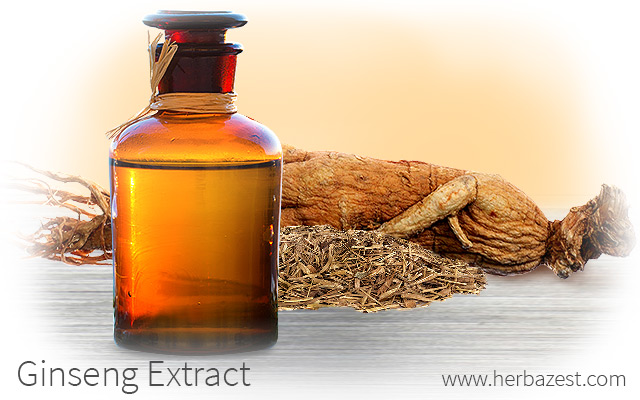Ginseng extract may take some time to make, but the process is easy, affordable, and extremely beneficial. With a long shelf -life and a number of applications, this ginseng liquid form is a very popular method of reaping the medicinal properties of the ginseng root. Learn more about this preparation, from how to make ginseng extract to the many benefits of using it.
What Is an Extract?
An extract is a concentrated liquid made by extracting the constituents of an herb in a non-alcoholic solution (e.g., water, glycerin, vinegar). Though the terms extract and tincture are often used interchangeably, the main difference is the carrier element used to acquire the medicinal properties of the herb.
How to Make Ginseng Extract
The process to make ginseng root extract is very similar to that of ginseng oil and only differs in the type of carrier substance used for the process, which in this case will be glycerin.
Glycerin is a water-soluble, colorless, odorless, viscous liquid with a high boiling point, which makes it a great carrier substance for the preparation of herbal extracts. It has a sweet taste (being 60% sucrose) but a low glycemic index. It is compatible with many other substances, safe to handle, and virtually non-toxic to human health and to the environment. According to its origin, glycerin can be animal based, plant based, or synthetic.
This is an extremely safe method of obtaining ginseng benefits, since there's no risk of exposure to any toxic agents.
HERBAL EXTRACTS OBTAINED USING GLYCERIN ARE ALSO CALLED GLYCERITES.
In order to prepare ginseng extract, you will need:
- Fresh or dried ginseng root
- Boiling water
- Vegetable glycerin
- A dry, clean glass container
Step by step process:
Place the ginseng root in a glass container.
Pour half a cup of boiling water over the root.
Add the vegetable glycerin up to few inches from the top and cover the glass container with a lid.
Place the container in a crockpot with a towel at the bottom to prevent the glass from breaking. Fill the crockpot with water and turn it on at minimum heat. In order to maintain the low temperature, it is better not to cover the crockpot.
Take off the lid of the container once a day and stir the preparation to allow the ginseng root to release their its compounds.
As it evaporates, keep adding water to the crockpot to maintain the same level for around three days.
On the third day, remove the glass container from the crockpot and strain the contents in a bowl using a cloth. Wring the cloth very well to extract the last drop.
Transfer to a dark glass container and store it in a cool, dark cabinet. Under the right conditions, this preparation will a have a shelf life of two to three years. However, in order to reduce the risk of bacterial contamination, the ginseng extract can be stored in the fridge.
An easier, alternative method of extracting ginseng's benefits consists of just covering the herbal material with a mixture of water and at least 55% of glycerin, combining very well, putting on a lid, and letting it macerate in a dark, cool place for a period of four to six weeks. Then strain and store as described above.
Ginseng Extract Benefits
Ginseng extract is a very safe form of the herb and is ideal for children, since it contains no alcohol. The extract is a great source to help increase energy and alertness and reduce stress. The extract of ginseng is a convenient way to consume the herb due to its many uses. A recommended ginseng dosage for this concentrated form is one third to half a teaspoon (30 - 60 drops) three times a day can be diluted in water, juice, or a tea. Since raw ginseng is known to have a displeasing taste, ginseng liquid extract is a great alternative to take mixed with water, herbal teas, juices, or smoothies.
While ginseng root extract may take some time to prepare, the quality of this ginseng liquid form and its many applications make it a great supplement, as well as an easy way to enjoy all the wonderful benefits of the Panax root.
Sources
- BOTEC Analysis Corporation, Methods for Producing and Testing Extracts and Infusions
- The Soap and Detergent Association, Glycerine: an overview, 1990




